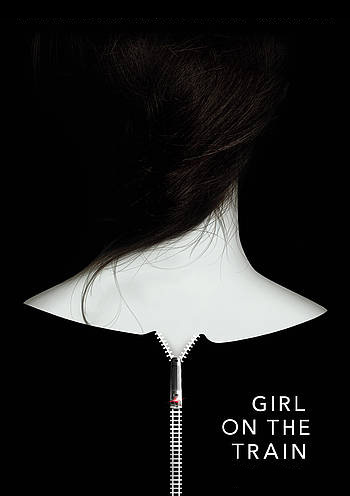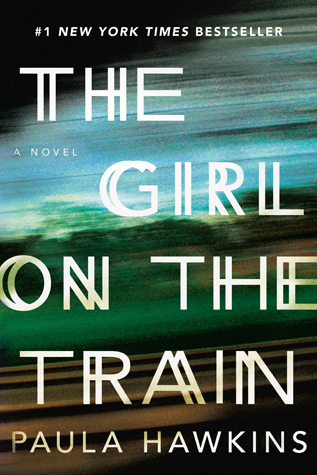
Paula Hawkins’s popular amnesia thriller The Girl on the Train is seven years old this year. Released in 2015, it racked up sales of $2 million three months after release. It attracted two feature film deals before its first birthday. By 2021 it had sold 23 million copies worldwide. Yet it has had its share of damning criticism. I take a sober look at The Girl On The Train phenomenon: the rise of the domestic noir thriller peopled with women in a rage.
The Girl On The Train is told from three female characters’ points of view: Rachel, Megan and Anne. Each is, or was, romantically entangled with a fourth character, Tom.
I enjoyed this book as the popular thriller that it is, not expecting nuanced characterisation, and not minding the three main characters’ love-sickness. Central protagonist, Rachel, is the novel’s hapless sleuth, a young woman who is so often drunk she can’t think straight, is prone to blackouts, and is still in love with a man who has mercilessly ditched her. Thus, the female characters are no paragons of virtue. I read it in the same spirit I might read Patricia Highsmith’s brilliant Strangers on a Train (1950), with one character a raging booze hound, not unlike Rachel. Both books ooze awfulness and one can’t put them down.
Story in a nutshell
EVERY DAY THE SAME
Rachel takes the same commuter train every morning and night. Every day she rattles down the track, flashes past a stretch of cosy suburban homes, and stops at the signal that allows her to daily watch the same couple breakfasting on their deck. She’s even started to feel like she knows them. Jess and Jason, she calls them. Their life—as she sees it—is perfect. Not unlike the life she recently lost.
UNTIL TODAY
And then she sees something shocking. It’s only a minute until the train moves on, but it’s enough. Now everything’s changed. Unable to keep it to herself, Rachel goes to the police. But is she really as unreliable as they say? Soon she is deeply entangled not only in a missing person investigation but in the lives of everyone involved. (PaulaHawkinsBooks)

Uber-unreliable narrator
As mentioned, our central protagonist, Rachel, drinks hard. So hard she lives with constant brain fog and sometimes has blackouts. Rachel’s memory loss is used as a device to mask the truth about Tom’s – spoiler alert – coercive control behaviour. For me, this book creates a sense of high drama and mystery that, at the same time, demonstrates what coercive control can look like, particularly on the gaslighting front. Gaslighting is not new in fiction (it’s very name arising from a film1) yet after the chic lit era, it was refreshing to see it come back into view.
Context
To appreciate the splash The Girl On The Train made means recalling how dominant chic lit had been before its release. Remember Bridget Jones’s Diary (1996), by Helen Fielding, and all that copycat fiction it inspired? Brigit Jones grew into a franchise comprising three films and two novels. It is one of the many novels predicated on 30-something women characters plotting to find ‘Mr Right’, while negotiating their careers. The goal? Not missing out on a life focussed on hetero-marriage and raising children just because they are ‘career women’. Chic lit writing tended toward the fluffy and lighthearted. Another influential chic lit text was Candace Bushnell’s Sex and the City (1997). By the mid-2000s, commentators were saying chic lit had saturated the market. By the early 2010s, publishers were abandoning the category completely. Salon.com stated that editors had given up accepting scripts in the genre. “We’ve pretty much stopped publishing chick lit,” one editor said. 2
The Rise of Domestic Noir
Dubbed ‘domestic noir’ by some and ‘grip lit’ by others, a much darker, nastier style of novel emerged featuring women in the lead. Its predominantly female characters had often settled into suburban marriages and were angry about their lot. The quintessential work of this genre was Gone Girl by Gillian Flynn (2012).
When The Girl on the Train appeared in 2015, with Rachel, eaten up with rage and envy, and featuring the ‘gaslighter’, Tom, it was instantly seen as the next domestic noirish Gone Girl.
Quotes from the book
“I woke feverish, panicky. Guilty. I do feel guilty. Just not guilty enough.” - Megan Hipwell "I never learn. I wake with a crushing sensation of wrongness, of shame, and I know immediately that I’ve done something stupid.” - Rachel Watson “I can’t do this, I can’t just be a wife. I don’t understand how anyone does it—there is literally nothing to do but wait. Wait for a man to come home and love you. Either that or look around for something to distract you.” -Megan Hipwell “Drunk Rachel sees no consequences, she is either excessively expansive and optimistic or wrapped up in hate. She has no past, no future. She exists purely in the moment.” - Rachel Watson

Jacqueline Rose’s review
Critic Jacqueline Rose’s review, Corkscrew in the Neck; on The Girl On The Train and Gone Girl, appeared in The London Review of Books in 2015, 3. Amusing and at times cutting, Rose says that in both novels “hatred of women is a nonchalant kind of pleasure, neither here nor there.” She suggests that both books make violence [towards women] “digestible, desirable, a bit like consuming a TV dinner, legs outstretched, in an armchair.” 4
Rose further notes that the protagonist Rachel’s character raises “the alcoholic detective to a new level”, being someone who is so drunk she is often “out of her head”, and is thus something of a “trainwreck”. Both witty and apt. She argues that: “all the main characters – Rachel herself, Anna. Megan – have, from the beginning to end of the story, been complete dupes. For me, this fact completely overrides the moments of empathy into the condition of women scattered through the novel….All of them are more like a sop or a form of blackmail – insights into hopelessness. ”
What propels the plot is the “gullibility of girls”, she concludes. Her take is that the book encourages women (readers) to hate themselves, and thus she suggests The GIrl on the Train unwittingly plays into the patriarchy, which operates to promote women to do just that – hate themselves. She quotes the following from Rachel’s dialogue as an example:
“God, he must hate me. I hate me.”
Highly amusing, Rose writes with authority, leaving one wondering: Are we, the reader, consuming the violence this well-plotted thriller depicts for pleasure’s sake from the comfort of our safe lives?
Some DV stats
Indeed the women in The Girl on The Train can be described as ‘gullible’. Yet does not this tendency for women to be duped by men who initially hide their misogyny and aggression explain some of our high levels of man-women domestic violence? Is it not a familiar story that women will fall in love and attached to men who will resort to violence against them, even murder? Here in Australia, we have the following statistics:
On average, one woman a week is murdered by her current or former partner. 5
1 in 3 women (30.5%) has experienced physical violence since the age of 15.2 6
1 in 5 women (18%) has experienced sexual violence since the age of 15.3 – Personal Safety Survey, Australia, 2016 (ABS cat. no. 4906.0). Canberra, ACT: ABS.
1 in 3 women (31.1%) has experienced physical and/or sexual violence perpetrated by a man they know. 7
Did not The Girl on the Train use a popular thriller format to bring this, at the time relatively undiscussed, aspect of women’s lives into the conversation to mark the way for more nuanced bools to come?
Hawkins’ latest
I see the novel as part of the reaction to chic lit. It marked an important shift away from the glamorisation of heterosexual marriage, to an acknowledgement that women, like men, can be gormless and deluded when in love. This book is not perfect, as I read it I desperately wanted Rachel to stop mooning over Tom and give up the booze. Yet I feel it was at least an attempt to portray a version of coercive control, a topic not in fashion during the chic lit era.
It is interesting to note, that in the opening of her latest book A Slow Fire Burning 8, Hawkins offers a scene where a woman is portrayed dramatically as “blood sodden”, running from a male pursuant. It turns out to be a scene from a book the protagonist, Irene, is reading.
“Oh for God’s sake,” Irene muttered out loud, snapping the book shut and slinging it onto the charity-shop pile.’What utter drivel.'”
Is this Hawkins’s comment in hindsight on the high-intensity, action focussed approach she herself used in The Girl on The Train? A Slow Fire Burning offers more subtlely drawn characters and no corkscrew in the neck ending, not that one is to take it too seriously, is my take.
What other critics said
“Ms. Hawkins keeps all these fibs, threats and innuendoes swirling through her book, to the point where they frighten and undermine each of her characters. None of them really know which of the others can be trusted or believed … One sign of this book’s ingenuity is the way key details are effortlessly omitted. And you’re not apt to miss them until the denouement when it is pointed out that certain characters never appeared and supposed facts were never explained. – Janet Maslin’s, New York Times. 9
“Paula Hawkins has come up with an ingenious slant on the currently fashionable amnesia thriller. . . . Hawkins juggles perspectives and timescales with great skill, and considerable suspense builds up along with empathy for an unusual central character.”—The Guardian
“Nothing is more addicting than The Girl on the Train.”—Vanity Fair
“The Girl on the Train has more fun with unreliable narration than any chiller since Gone Girl. . . . [It] is liable to draw a large, bedazzled readership.”—The New York Times
“Marries movie noir with novelistic trickery. . . hang on tight. You’ll be surprised by what horrors lurk around the bend.”—USA Today
“Like its train, the story blasts through the stagnation of these lives in suburban London and the reader cannot help but turn pages.”—The Boston Globe
“Gone Girl fans will devour this psychological thriller.”—People
“The Girl on the Train, Hawkins’s first thriller, is well-written and ingeniously constructed.” – The Washington Post
Further reading
Some relevant articles:
‘Something happened, something bad’: Blackouts, uncertainties and event construal in The Girl on the Train, Marcello Giovanelli 10 Gaslighting: Domestic Noir, the Narratives of Coercive Control, Deborah Philips 11 The Girl on the Train Is a Missed Opportunity, Sophie Gilbert, The Independent. 12 "The More You Deny Me, The Stronger I Get": Exploring Female Rage in The Babadook, Gone Girl, and The Girl on the Train, Gwin, Stephanie 13 Friday essay: beyond ‘girl gone mad melodrama’ — reframing female anger in psychological thrillers. Liz Evans, The Conversation 14
Footnotes
- Gaslight, 1944, directed by George Cukor.
- The death of chick lit: Can the pink-covered fiction that once ruled bookstores really be on the ropes? LAURA MILLER, https://www.salon.com/2012/02/23/the_death_of_chick_lit/
- London Review of Books, Jacqueline Rose Vol. 37 No. 17 · 10 September 2015
- ibid
- Australia’s National Research Organisation for Women’s Safety (ANROWS). 2018. Violence against women: Accurate use of key statistics (ANROWS Insights 05/2018). Sydney, NSW: ANROWS.
- Australian Bureau of Statistics (ABS). 2017. Personal Safety Survey, Australia, 2016 (ABS cat. no. 4906.0). Canberra, ACT: ABS
- Australia’s National Research Organisation for Women’s Safety (ANROWS). 2018. Violence against women: Accurate use of key statistics (ANROWS Insights 05/2018). Sydney, NSW: ANROWS. All from: Our Watch, quick facts Australian Bureau of Statistics (ABS). 2017https://www.ourwatch.org.au/quick-facts/
- 2021, Doubleday
- Another Girl Gone in a Tale of Betrayal, Janet Maslin, Jan. 4, 2015, NEW YORK TIMES.
- First Published February 9, 2018 Research Article https://doi.org/10.1177/0963947017752807
- Deborah Philips (2021): Gaslighting: Domestic Noir, the Narratives of Coercive<br data-rich-text-line-break="true" style="box-sizing: border-box; margin: 0px; padding: 0px;">Control, Women: A Cultural Review, DOI: 10.1080/09574042.2021.1932258. To link to this article: https://doi.org/10.1080/09574042.2021.1932258
- https://www.theatlantic.com/entertainment/archive/2016/10/the-girl-on-the-train-review/503150/
- Permalink: http://rave.ohiolink.edu/etdc/view?acc_num=bgsu1510769718601419
- August 27, 2021, https://theconversation.com/friday-essay-beyond-girl-gone-mad-melodrama-reframing-female-anger-in-psychological-thrillers-161583
